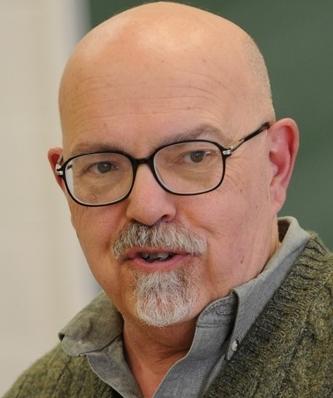| Transferring Undergraduate Research Pedagogies to the Classroom |
![PDF-NOTE: Internet Explorer Users, right click the PDF Icon and choose [save target as] if you are experiencing problems with clicking.](http://rsnonline.org/templates/rsntemplate-smallmasthead/images/pdf_button.png) |
 |
|
Page 1 of 3 John R. Lanci, Stonehill College
Raising the Question of Raising Questions: Background and RationaleOne day I was driving onto our campus. It was a crisp autumn morning flooded with sunlight, but the beauty of fall in New England was marred by the unsightly hole in the ground around which I had to detour to get to my office. They were pouring the basement for a huge new science center. As I made my way past the construction site, a question popped into my mind: What kind of artwork would the college put into the building? A crucifix in each classroom? Would that be it? I had been casting about for a new approach to my popular religion course (which is probably why I had crucifixes on the mind), and after further reflection, I decided to structure the syllabus for this upper-level seminar around these questions: What kind of spiritual art should the college place in the new science center, and how should it go about finding that art? I e-mailed the students who had already registered for the course for the following semester and explained what I had in mind. Because their work would involve others on campus, I also alerted members of the fine arts and science departments, as well as other administrators and staff whom students would be contacting as they worked on the problem. In the weeks that followed, over a third of the preregistered students dropped the class, and registration churned with adds and drops as word got out about what I had in mind. By the end of registration, the roster stabilized at eighteen, just about the number with which I had begun. I gave up lecturing at undergraduates years ago. Instead, I conducted all classes, including the introductory ones, as discussion-based seminars of no more than twenty-five students who read texts, assisted by focusing questions, and then came to class and talked about them. Over a period of years I became comfortable in my role as facilitator of discussion, but eventually I found myself facing the fact that students were experiencing good conversations but not necessarily learning much that lasted with respect to the content of the courses. I needed a new approach to teaching, and I found it while participating in our undergraduate research program, which employed a number of active learning strategies. Could the engaged pedagogy, which proved effective with one or two research students, be adapted for a whole class? Could such a class make an original contribution to some aspect of our discipline? My questions were answered when I encountered “problem-based learning” (PBL). Developed by medical schools in the 1970s, PBL, like other active learning strategies, has its roots in much earlier calls for educational engagement. It has migrated from the sciences into the humanities, but we in religious studies have been slow to incorporate it into our stable of teaching techniques, despite abundant research indicating that active forms of learning are far more effective in attaining learning outcomes than traditional, passive “stand and deliver” pedagogies (see Bain; Meyers and Jones). |


 John R. Lanci has been a college teacher for almost thirty years and is currently professor of religious studies at Stonehill College in Easton, Massachusetts. Trained in New Testament and Christian origins, he is the author of two books and several articles on the early church, including Texts, Rocks, and Talk: Reclaiming Biblical Christianity to Counterimagine the World (Liturgical Press, 2002), as well as articles on active learning strategies for undergraduate teaching. Lanci received Stonehill’s Louise Hegarty Award for Excellence in Teaching in 1996, and is currently the college’s inaugural Center for Teaching and Learning Faculty Fellow.
John R. Lanci has been a college teacher for almost thirty years and is currently professor of religious studies at Stonehill College in Easton, Massachusetts. Trained in New Testament and Christian origins, he is the author of two books and several articles on the early church, including Texts, Rocks, and Talk: Reclaiming Biblical Christianity to Counterimagine the World (Liturgical Press, 2002), as well as articles on active learning strategies for undergraduate teaching. Lanci received Stonehill’s Louise Hegarty Award for Excellence in Teaching in 1996, and is currently the college’s inaugural Center for Teaching and Learning Faculty Fellow. 